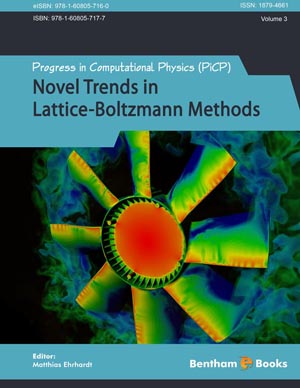Abstract
SHS investigation development is considered from the geographical and historical viewpoint. 3 stages are described. Within Stage 1 the work was carried out in the Department of the Institute of Chemical Physics in Chernogolovka where the scientific discovery had been made. At Stage 2 the interest to SHS arose in different cities and towns of the former USSR. Within Stage 3 SHS entered the international scene. Now SHS processes and products are being studied in more than 50 countries.
Abstract
The first part of this introduction is devoted to the known derivation of the lattice Boltzmann method (LBM): We track two different derivations, a historical one (via lattice gas automata) and a theoretical version (via a discretization of the Boltzmann equation). Thereby the collision term is approximated with a single relaxation time model (BGK) and we motivate the introduction of this common approximation. By applying a multiscale expansion (Chapman-Enskog), the solution of the numerical method is verified as a meaningful approximation of the solution of the Navier-Stokes equations. To state a well posed problem, common boundary conditions are introduced and their realization within a LBM is discussed.
In the second part, the LBM is extended to handle coupled problems. Four cases are investigated: (i) multiphase and multicomponent flow, (ii) additional forces, (iii) the coupling to heat transport, (iv) coupling of electric circuits with power dissipation (as heat) and heat transport.
Keywords:
BBGKY hierarchy, BGK approximation, boundary conditions, Chapman-Enskog expansion, circuit coupling, D3Q19, discrete velocity space, Gauß-Hermite quadrature, lattice gas automata, Navier- Stokes equations, thermal coupling.
Recommended Chapters
We recommend

Authors:Bentham Science Books


 Download PDF Flyer
Download PDF Flyer



